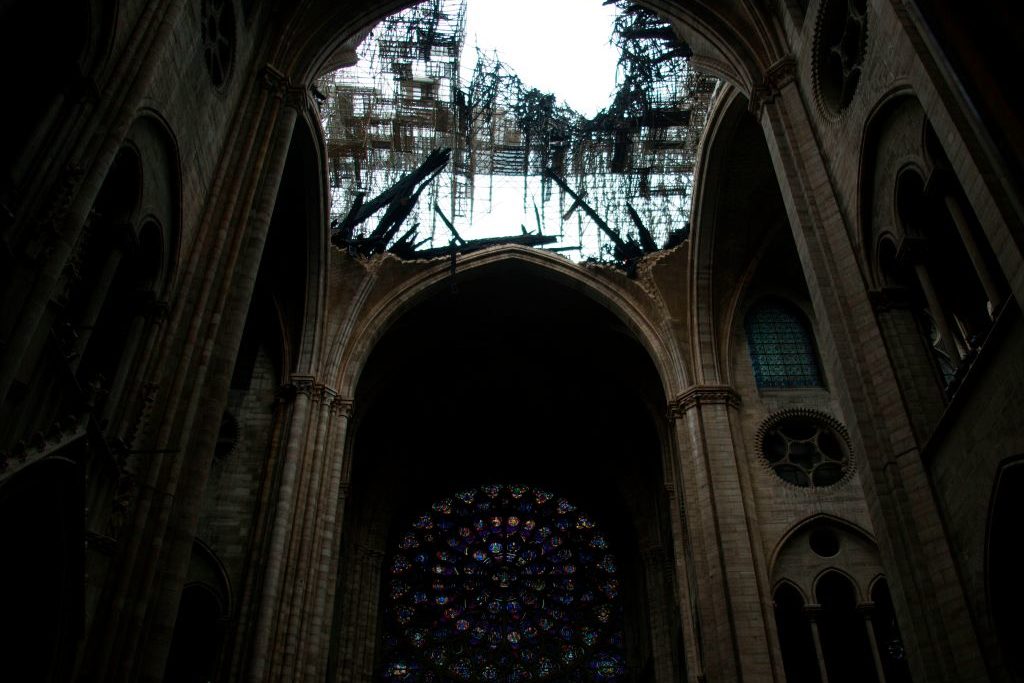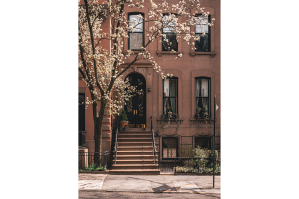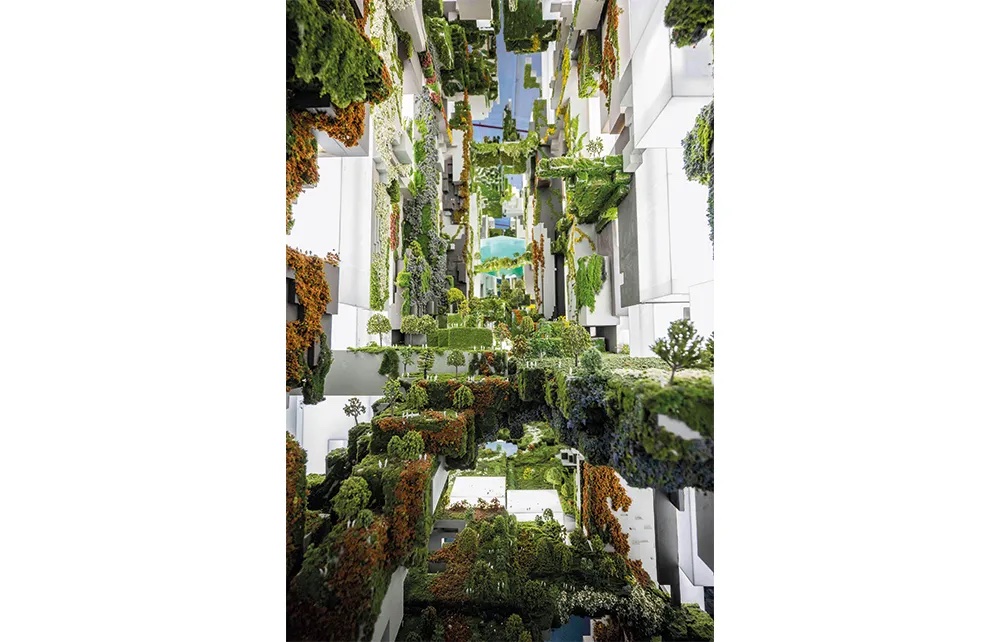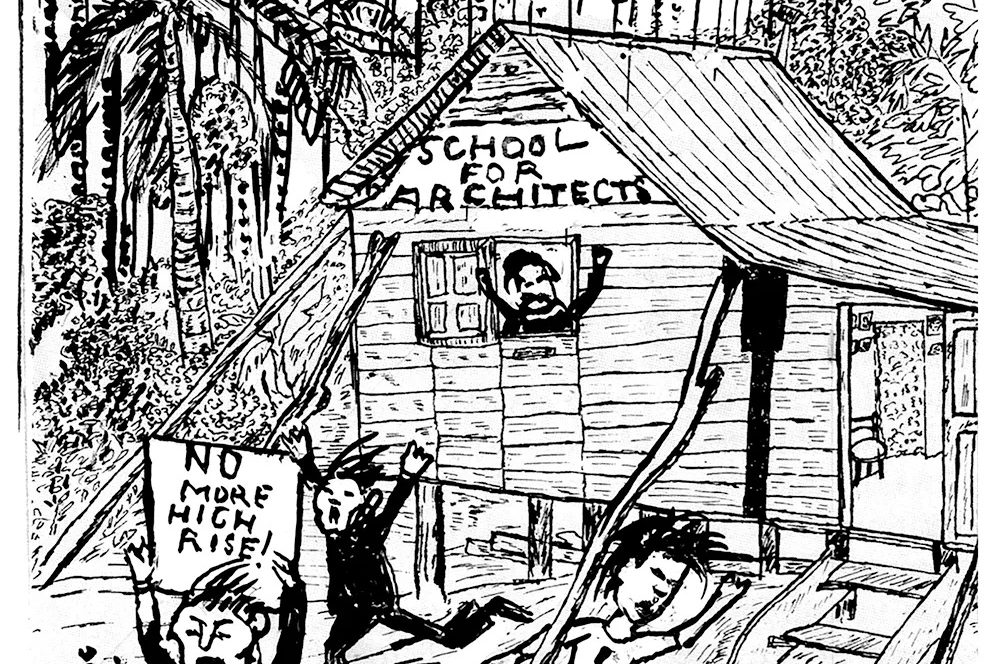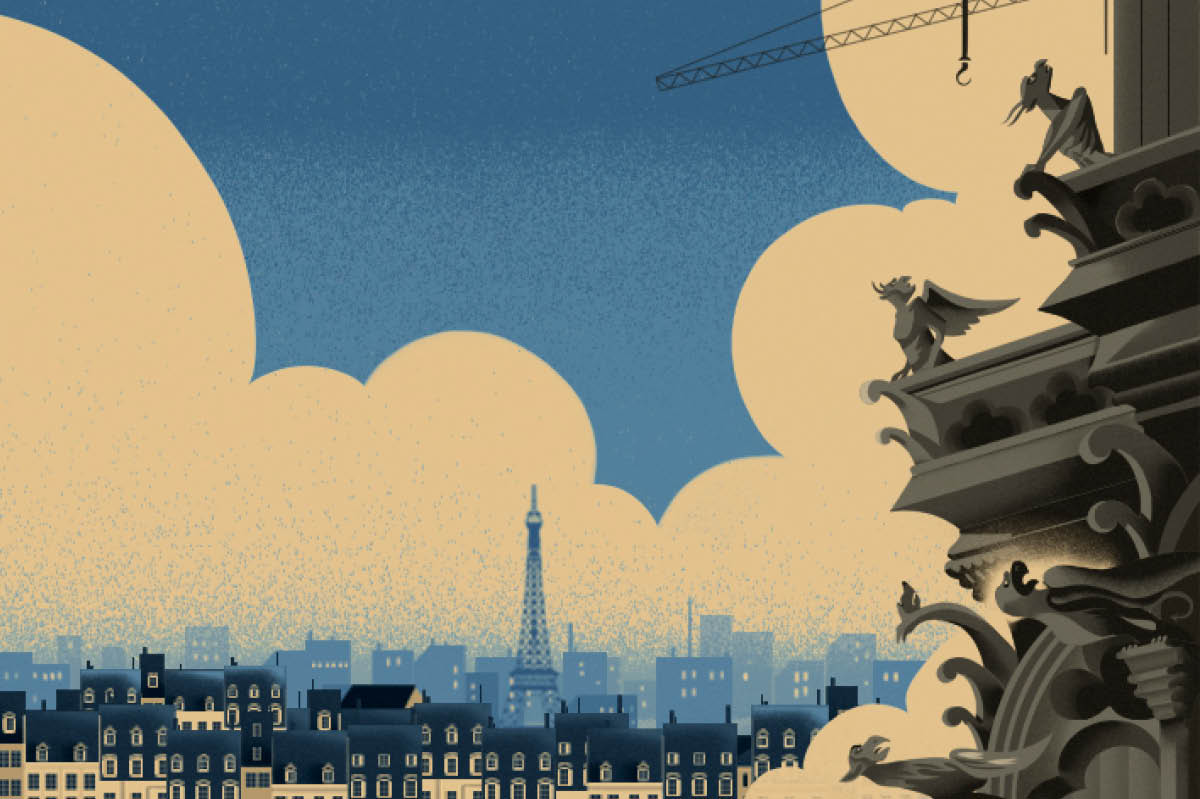One heartening if dimly consoling result of the disastrous fires that swept through Notre-Dame cathedral has been the willingness of politicians and philanthropists to pledge their financial and institutional support towards its reconstruction. Yes, some of them might have an eye on acquiring good PR. Yes, believers might question the nature of their attachment. Still, it good to know that people will not watch the decline of beauty and tradition with absolute indifference.
The reconstruction, though, will be fiercely contested. Already, modernists are sidling into the conversation with progressive platitudes and philistinic schemes. You might think the widespread shock and sadness that the fire caused represented love and admiration for Notre-Dame as it was. Not a bit of it, say modernists. It must be changed.
The atheist Ali A. Rizvi suggests, in perhaps the most blatant example of opportunism, that while the cathedral was designed by Catholics, built by Catholics and maintained by Catholics, and has always been used by Catholics as a house of worship, it should become ‘a museum of art, architecture and history without the legacy of child rape and supernatural delusion.’ The reduction of Catholic history to ‘child rape’ is too crass to analyze with anything except a sneer but the audacity that it takes to suggest the appropriation of a cathedral is interesting. Why can’t atheists, being so enlightened, not simply build their own beautiful places? (I cannot resist continuing without a mention of the atheist author Michael A. Sherlock, who tweeted out a picture of Notre-Dame burning with the caption, ‘When the Paris police are knocking and you need to get rid of your child porn collection.’ Not only does Mr Sherlock think an age-old cathedral burning is hilarious, then, but he thinks child abuse is just a stick to beat his opponents with. You hope moderate atheists will rein in the people who give them a bad reputation as obnoxious nerds.)
Beautiful buildings need not be religious, of course, as numerous palaces, castles and museums demonstrate. Too often, though, modern architects and architecture critics are blinkered by political ideology. John Harwood, an architectural historian, has told Rolling Stone (in what, in fairness, is not a direct quote but the reporter’s paraphrase):
‘…that it would be a mistake to try to recreate the edifice as it once stood, as LeDuc did more than 150 years ago. Any rebuilding should be a reflection not of an old France, or the France that never was — a non-secular, white European France — but a reflection of the France of today, a France that is currently in the making.’
It would never cross anyone’s mind to suggest that Mecca or the Golden Temple should lose their distinctively Islamic and Sikh characters to accommodate people of different faiths but Catholics, and conservative Frenchmen, are being asked to reshape anything that expresses their own beliefs and heritage. Why, people who share the sentiment attributed to Harwood should ask themselves, is liberal multiculturalism so fragile that any cultural distinctiveness is to be challenged?
‘The building was so overburdened with meaning,’ Rolling Stone also quotes Patricio del Real of Harvard as saying, ‘That its burning feels like an act of liberation.’ To be fair, this isolated quote leaves ambiguities over whether the architectural historian was giving his view or expressing someone else’s. Whoever’s it is, though, it is perverse to the point of being obscene. It is also disingenuous. The problem is not that it has meaning but that it has the wrong kind.
To be fair, the worst of modernist architecture has never been narrowly political. Le Corbusier, for example, with his concrete monstrosities, was hard to pin down on the left or the right. Stephen Bayley, of the Telegraph, is not such a modernist and has no plans to replace the cathedral with a skyscraper but he shares the aimless love of ‘originality’. He salutes the ‘perverse originality’ of the Palace of Westminster and the ‘uncompromising modernity’ of the post-war Reichstag. Granted, those are fine buildings. The new is not always the lesser. But this applies to the old as well. Originality has no inherent value. Hayley makes no argument that Notre-Dame requires reimagining, and sidesteps the fact that in an age of starchitects and politicization it is improbable that any major modernizing will not detract from the beauty of the cathedral. The Times of London carries a terrifying report on proposed designs for the reconstruction, which include a hideous, and hideously impractical, glass roof. Eyesore auteur Norman Foster says Notre-Dame presents an ‘extraordinary opportunity’, which should make us feel like a patient being visited by organ traffickers.
There is nothing essentially wrong with the modern. If this were not so then a mud hut would be more valuable than Notre-Dame. Yet one of the faults of modernism has been the iconoclastic urge to reshape everything traditional. Say what you like about modernism in art but if an unhinged situationist throws paint across the Mona Lisa I doubt that many people would suggest that instead of trying to remove the paint we should reconstruct the portrait in an abstract style.
There is, of course, no need to reconstruct the building brick by brick. If nothing else, it might be reconstructed in a safer style. But I believe, and suspect that most people would agree with me, that reconstructions should in general aim to recreate and not transform the earlier style. In a world of ceaseless, dramatic and dangerous change it will be a reminder that the beautiful and the profound can transcend generations.



